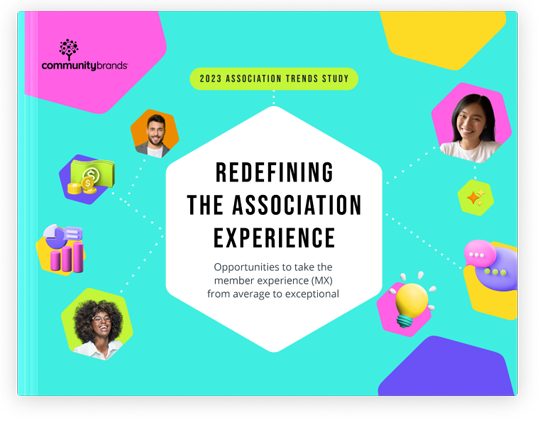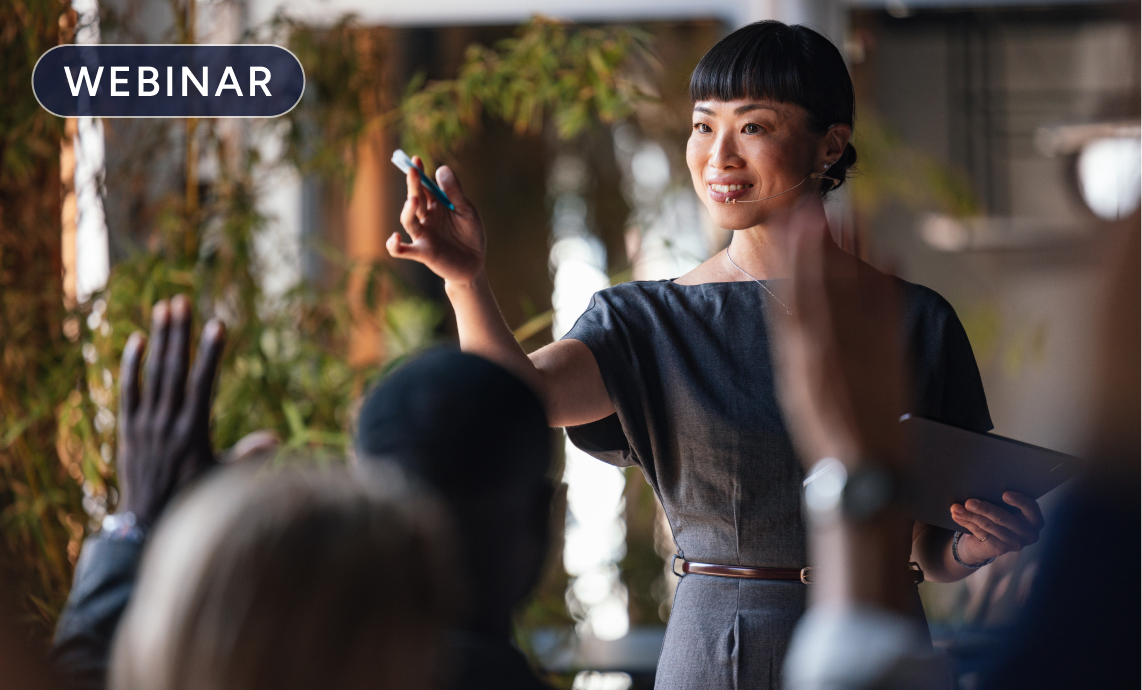Member data holds incredible potential for associations, from improving decision-making to creating better member experiences and identifying growth opportunities. However, many associations struggle to put their data to use, despite understanding its value.
Why? The reasons often come down to a mix of technological gaps and operational challenges. Continue reading this blog post to learn how to overcome these frequent barriers and begin using your member data.
Why do associations fail to use their member data?
Let’s take a step back to understand why associations don’t use their member data, even when they know data insights can be useful.
Many associations face challenges when it comes to data. In research conducted by Momentive Software, association professionals say that their top member data challenges include using data analytics, processing/using their data, and finding the right tools to analyze data.
An article by McKinley Advisors about developing a data strategy that fits your association’s culture suggests that when an association avoids using data, it can be because of a lack of comfort with the underlying meaning of the information. Or it can be that the organization’s culture might lean more toward using their experience and instincts for decision making.
Why your association can’t afford not to use member data
Despite these challenges, associations can’t afford to sit out of the data game. Consider the following ways that failing to analyze and use your data can hurt your association:
1. Inaccurate decision-making
When you don’t have tools and techniques in place to help you put your member data to use, you don’t have accurate insights into the overall health of your organization. How can you keep your association going strong if you don’t know how well you’re tracking toward your goals?
Without data insights, you also can’t make precise and well-informed business decisions. If each role across your organization houses data in different places and struggles to generate reports and view data, then they could each be making decisions based on different (and inaccurate) data. Or they could even be relying on hunches and instincts.
2. Missed opportunities
Without clear views into your member data, you miss opportunities to create new member benefits and programs that can help you grow your membership and improve member satisfaction.
3. A poor member experience and a hit to your revenue
If different roles in your organization are struggling to use data (or working with different sets of data to make decisions) your member experience suffers. Your organization isn’t using solid and consistent insights to make decisions about the programs and benefits you offer members. You’re missing opportunities to keep your organization growing and thriving. Eventually, you might lose members due to a poor member experience, and that means lost revenue.
Simple steps to make more data-driven decisions
The impact of failing to use your member data might seem bleak. And moving toward more data-driven decision making might seem out of reach for your association.
But there’s good news: Becoming a data-driven organization is completely achievable, and it can help you avoid missteps, spot trends, and find new opportunities for growth.
You can start with a few simple steps, such as:
- Get a single view of your data
Using an all-in-one association management software (AMS) system like YourMembership AMS by Momentive Software can help your entire organization collect, manage, analyze, and use your data more effectively. - Define and monitor key performance indicators (KPIs)
If you haven’t already done so, establish a list of KPI metrics that can help you track progress toward your association’s goals. Then, set up dashboards in your AMS system so that you have a quick, accurate overview of your association’s health every day. - Set up detailed reports
In addition to setting up KPIs in your AMS dashboard, set up more detailed reports for each function in your association. For example, set up a membership report that shows overall membership trends (new members, lapsed members, etc.) as well as a breakdown of key membership demographics. And set up a marketing report that shows website visits, email open and click-through rates, and online member community engagement. - Review data regularly
Plan a regular meeting to review reports for each key function in your organization. Talk about trends, what the data is telling you, what you might do to improve numbers that are moving in the wrong direction, and what opportunities the trends might present.
Tips to keep your data clean and ready to use
Momentive Software research found that only one-third of associations rate their organization’s data as excellent or very good. Why is that? In part, it might be because improving data quality seems like too much work, even when the benefits are clear.
Keeping your member data clean might seem daunting — especially when you have a small staff. But with a few simple approaches, it can be easier than you might think. And the effort can be well worth it.
Here are four tips for keeping your member data clean and ready to use:
1. Have one place for everything
It’s nearly impossible to keep data current, deduplicated, and organized when it’s scattered across multiple spreadsheets and systems. So, make sure you organize your member data in a single system.
For example, moving to all-in-one association management software (AMS) like YourMembership AMS by Momentive Software makes it much easier to collect, view, manage, and use your data because all the data is right there in one convenient place.
2. Clean your data in step
If you haven’t been cleaning your data regularly, tackling a data clean-up can seem overwhelming. So, start with categories of data. Make a list of the types of member data you want to deduplicate, update, and organize, and then work on each category one-by-one.
During this process, consider deleting or archiving old data that you don’t need anymore. Having only the data you truly use in your AMS will help to streamline your processes and make your use of the software more efficient.
3. Clean regularly
Once your data is tidied up, remember that it will be easier to keep clean if you clean it regularly. Managing duplicates and updates regularly (weekly, monthly, or even quarterly) will keep your data cleaner. And if you only must deal with a handful of duplicates each time, the task will be quick and easy. If you wait to do this once a year (or not at all), the number of duplicates and outdated information will be much higher, making the task much bigger.
To find the right frequency for data cleaning for your association, start by cleaning weekly. Then, switch to every two weeks, then once per month, etc. Do this until you find the right interval. It should be frequent enough that data updates don’t become overwhelming, and not so frequent that there are too few updates to make it worth the time spent.
4. Put data entry standards in place
It will be much easier to keep your data clean if you have database policies and procedures in place. Create a document that includes processes and details for data entry, including consistent naming standards for things like campaigns, events, and exports.
Be sure to share these standards with anyone in your organization who adds/edits data or pulls reports. And be sure to have a process in place for training new employees or volunteers on your policies and procedures.
Also, be on the lookout for consistent data integrity issues, as this might be a sign that you need to re-train staff or volunteers. You might also need to update your data entry policies to make sure they’re clear and correct.
Learn more strategies to effectively manage your member data
When you fail to properly use your member data, you limit your association’s growth and member satisfaction. The good news is that becoming a data-driven organization is both achievable and rewarding. Begin by consolidating your data, regularly reviewing key metrics, and maintaining clean records, to unlock powerful insights to drive better decisions and stronger outcomes.






